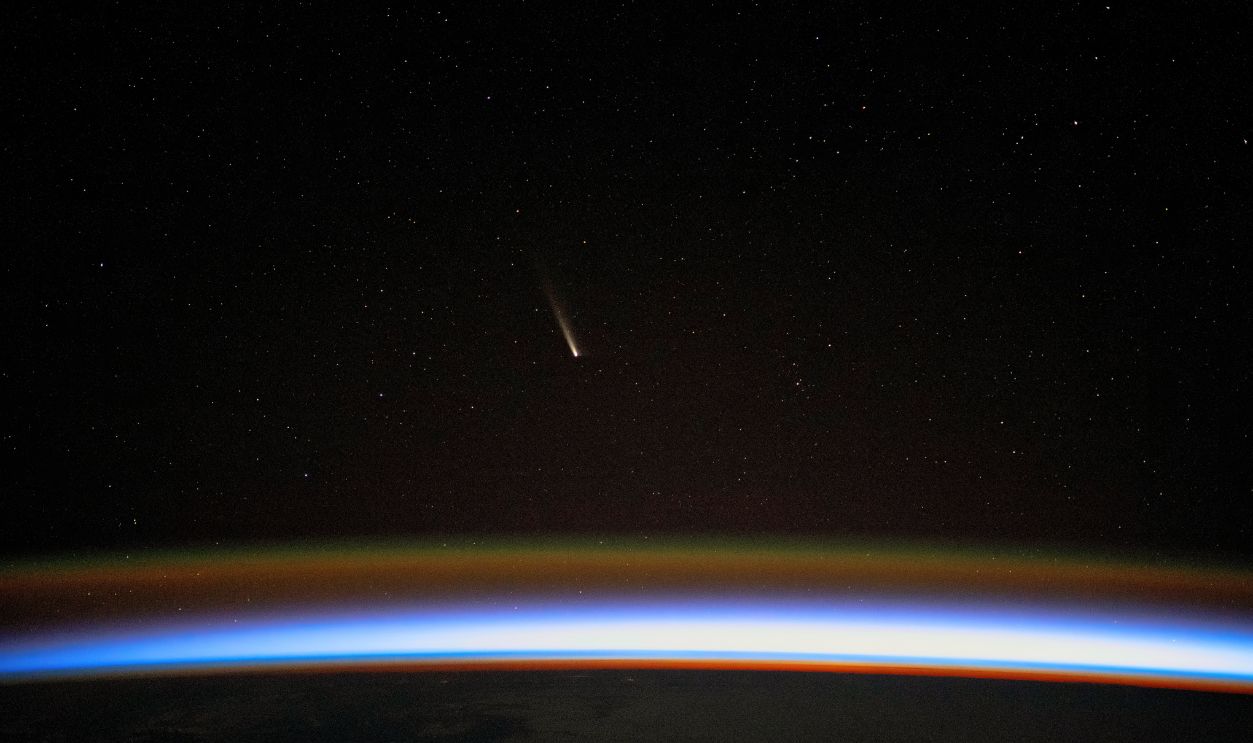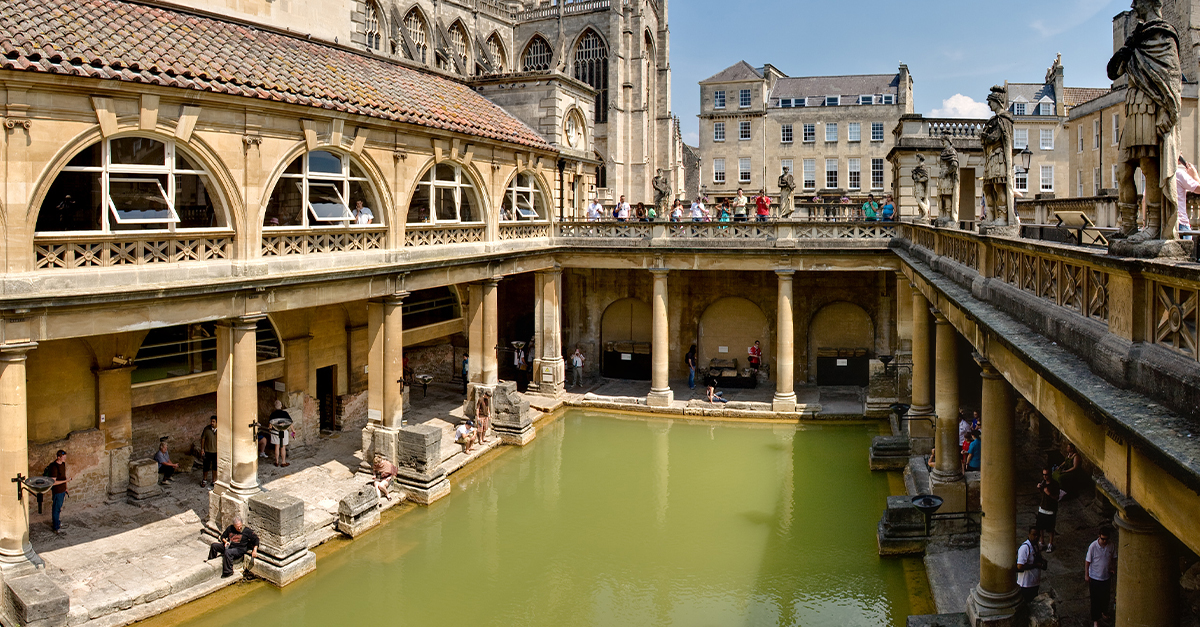Curiosity In The Night Sky
Comets always seem to intrigue us, don't they? A few weeks ago, Comet Tsuchinshan-ATLAS—a rare and special visitor lit up the sky. So, let’s find out more about its bright beauty.

A Rare Celestial Event
Comet Tsuchinshan-ATLAS, dubbed the "comet of the century," offers a once-in-a-lifetime viewing opportunity for U.S. skywatchers from October 9, 2024, to October 21, 2024. This celestial visitor, officially named C/2023 A3, makes its appearance in about 80,000 years, causing excitement among astronomers and casual stargazers like us.
 Fernando Astasio Avila, Shutterstock
Fernando Astasio Avila, Shutterstock
Observational Milestones of C/2023 A3
Comet C/2023 A3 (Tsuchinshan–ATLAS) was first detected in December 2022 by the Zwicky Transient Facility. It was independently rediscovered in January 2023 by Purple Mountain Observatory and in February by the ATLAS project. Initially thought to be an asteroid, subsequent observations revealed its cometary nature, with a visible coma and small tail.
 H.Stockebrand, CC BY 4.0, Wikimedia Commons
H.Stockebrand, CC BY 4.0, Wikimedia Commons
The ATLAS Comet Legacy
The ATLAS project has contributed significantly to comet discovery and observation. ATLAS-discovered comets often bear the project's name, highlighting the importance of modern sky-monitoring systems in helping us understand these celestial wanderers and their journeys through the solar system.
Exceptional Brightness
Now, what sets this comet apart is its extraordinary brightness. Experts estimate it to be potentially 100 times brighter than any comet observed in the last two decades. This highly exceptional luminosity makes it visible to the bare eye, which is really a rare treat for stargazers.
 Marti Bug Catcher, Shutterstock
Marti Bug Catcher, Shutterstock
Magnitude Scale
The comet's brightness is measured on the astronomical magnitude scale. Predictions suggest it could reach a magnitude between -3 and -5, potentially rivaling the brightness of Venus, one of the most luminous objects in our night sky.
 Kevin Heider, CC BY-SA 3.0, Wikimedia Commons
Kevin Heider, CC BY-SA 3.0, Wikimedia Commons
Comet Visibility Factors
A comet's visibility depends on various astronomical and environmental factors. These include its distance from Earth, its position relative to the Sun, and local weather conditions. The comet's brightness can also fluctuate as it travels, affecting when and how well it can be seen from different locations across the country.
 C messier, CC BY-SA 4.0, Wikimedia Commons
C messier, CC BY-SA 4.0, Wikimedia Commons
The Comet's Journey
The comet reached its closest point to the Sun, or perihelion, on September 27, 2024, about 59 million kilometers away. You may not know, but the Tsuchinshan-ATLAS originates from the Oort Cloud, a distant region at the edge of our solar system. This "ball of ice" might contain a valuable scientific prize.

Tail Formation
So, as the comet approaches the Sun, its ice begins to vaporize. This process creates the comet's signature tail, which can stretch for millions of miles. In turn, the tail's appearance and length may vary throughout the viewing period, adding to the spectacle.
 cafuego, CC BY-SA 2.0, Wikimedia Commons
cafuego, CC BY-SA 2.0, Wikimedia Commons
Another Viewing Opportunity
In case you missed your chance, a few days still remain to see the comet of the century. Last seen on October 11, comet Tsuchinshan-Atlas will be visible after sunset until October 21, 2024. A bare eye or binoculars can see it on the west-south-west horizon.
 AlexL1024, CC0, Wikimedia Commons
AlexL1024, CC0, Wikimedia Commons
Viewing Window
If you want to see the comet, look toward the west-south-west sky right after sunset, around 7 p.m. Look toward the west and use the tail of the Big Dipper to find Arcturus, a bright star near the end of its length.
 Corco, CC BY 4.0, Wikimedia Commons
Corco, CC BY 4.0, Wikimedia Commons
Viewing Window (Cont.)
At first, the comet will be low on the horizon. But, until October 21, it will slowly rise above the sky. Every night, the viewing window will get better, mostly because the Sun will go down earlier. And THAT will help you find the comet in the sky.
 AlexL1024, CC0, Wikimedia Commons
AlexL1024, CC0, Wikimedia Commons
Photography Opportunities
Of course, the comet's brightness and visibility make it an attractive target for astrophotographers—and us, too. Long-exposure shots can click stunning details of the comet and its tail. Even smartphone cameras, with the right settings, have been able to capture this memory, so why not try the next time?
 Jan Beránek, CC BY 4.0, Wikimedia Commons
Jan Beránek, CC BY 4.0, Wikimedia Commons
National Parks As Viewing Spots
The dark skies in U.S National Parks render them great places to see the stars. Be on the lookout, as there are high chances to witness comets at many parks' special stargazing events that happen during such important astronomy events.
 paramsach, CC BY 2.0, Wikimedia Commons
paramsach, CC BY 2.0, Wikimedia Commons
Educational Impact
Undeniably, the appearance of such a bright comet serves as an excellent educational opportunity. Some schools and universities across the country often use these events to build interest and curiosity in astronomy and space sciences among students.
Community Engagement
Astronomical events like this, more often than not, bring communities together. Clubs, planetariums, and local organizations frequently organize viewing parties, so that you get a chance to share the experience with others. Just imagine watching this with your loved ones.
 Vlajko, CC BY-SA 3.0, Wikimedia Commons
Vlajko, CC BY-SA 3.0, Wikimedia Commons
Technological Advancements
With the use of modern technology, this comet may be observed and data collected in a way never possible before. And why? Because modern space—and ground-based devices provide detailed data that was not possible to obtain during its last transit.
 NASA/Matthew Dominick, Wikimedia Commons
NASA/Matthew Dominick, Wikimedia Commons
Concurrent Celestial Events
Just imagine gazing up and seeing streaks of light and a glowing comet—all in a single session. When a comet shows up, it often brings a celestial party. Alongside meteor showers, it creates an exciting chance for skywatchers to catch multiple cosmic wonders in one go.
 Juan lacruz, CC BY 4.0, Wikimedia Commons
Juan lacruz, CC BY 4.0, Wikimedia Commons
A Fleeting Opportunity
With the comet’s super-long orbit, this really is a once-in-a-lifetime event. Its brief appearance boosts the excitement and urgency for everyone across the U.S. to grab this rare chance to see such a celestial wonder. So, make sure you don’t miss out on this opportunity the next time it shows up!
 Edu INAF, CC BY-SA 2.0, Wikimedia Commons
Edu INAF, CC BY-SA 2.0, Wikimedia Commons
Upcoming Comet To Look Out For
Comet 333P/LINEAR, a Jupiter family periodic comet, will make its return in late 2024. Discovered by the LINEAR project in 2007, it orbits the Sun every 8.7 years in a retrograde path. Visible from both hemispheres, it should reach its brightest in November and December.









